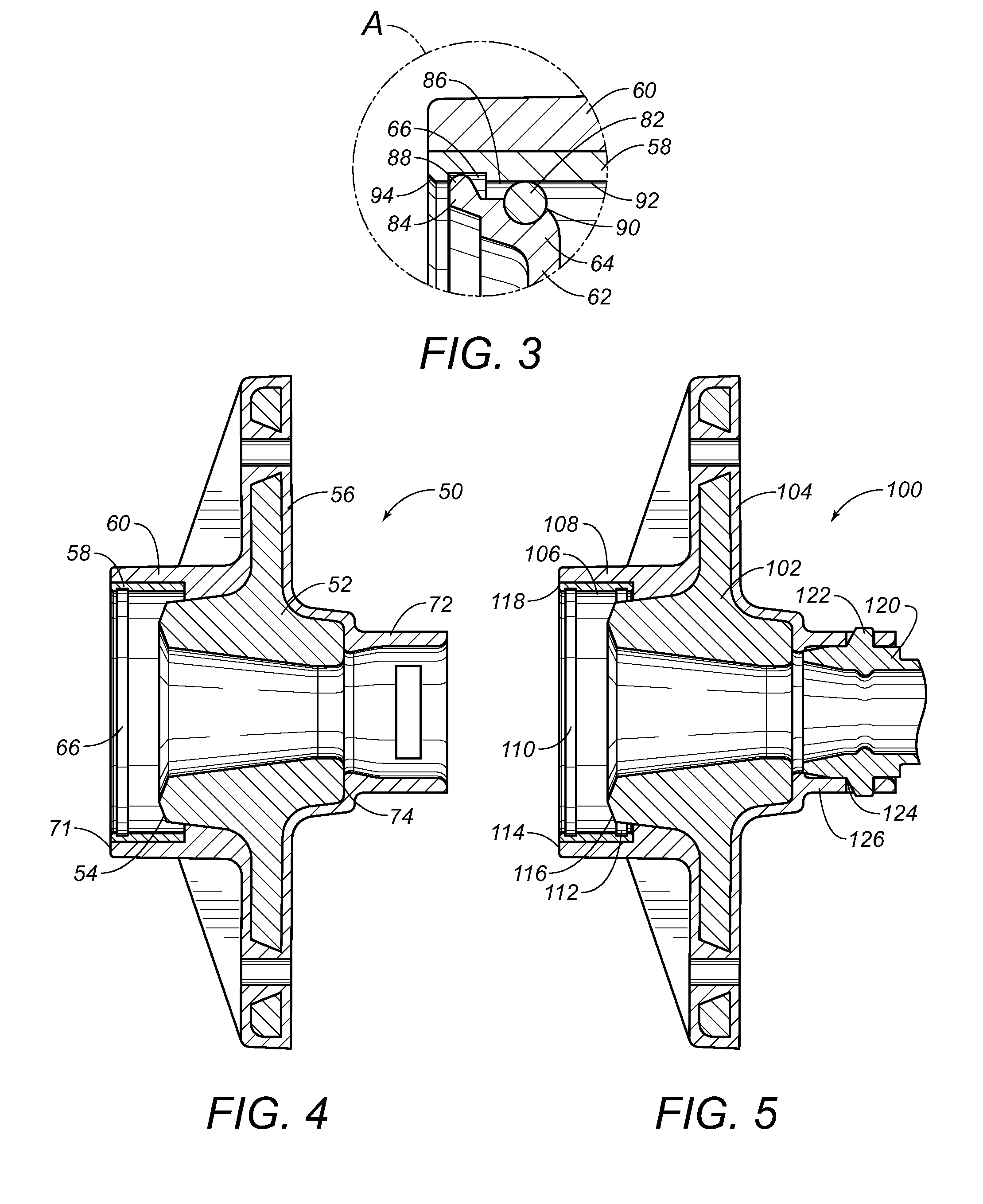Positively retained cap for use on an encapsulated anchor of a post-tension anchor system
- Summary
- Abstract
- Description
- Claims
- Application Information
AI Technical Summary
Benefits of technology
Problems solved by technology
Method used
Image
Examples
Embodiment Construction
[0041]Referring to FIG. 2, there is shown the anchor assembly 50 as used in a post-tension anchor system in accordance with the teachings of the present invention. The anchor assembly 50 includes an anchor member 52 having an end surface 54, a polymeric encapsulation 56 coving the anchor member 52, a rigid ring 58 affixed within a tubular section 60 of the encapsulation 56, and a cap 62 having a flanged end 64 with an outer periphery engaged with a notch 66 of the rigid ring 58.
[0042]As can be seen in FIG. 2, the anchor member 52 is configuration similar to the anchor member as used within the prior art of FIG. 1. The anchor member 52 has a wedge cavity 68 of a tapered configuration formed centrally thereof. The end surface 58 defines the opening 70 of the wedge cavity 68 so as to allow wedges to be inserted for friction-fit engagement with the outer surface of a tendon extending therethrough.
[0043]The polymeric encapsulation 56 extends around the outer surfaces of the anchor member...
PUM
 Login to View More
Login to View More Abstract
Description
Claims
Application Information
 Login to View More
Login to View More - R&D
- Intellectual Property
- Life Sciences
- Materials
- Tech Scout
- Unparalleled Data Quality
- Higher Quality Content
- 60% Fewer Hallucinations
Browse by: Latest US Patents, China's latest patents, Technical Efficacy Thesaurus, Application Domain, Technology Topic, Popular Technical Reports.
© 2025 PatSnap. All rights reserved.Legal|Privacy policy|Modern Slavery Act Transparency Statement|Sitemap|About US| Contact US: help@patsnap.com



